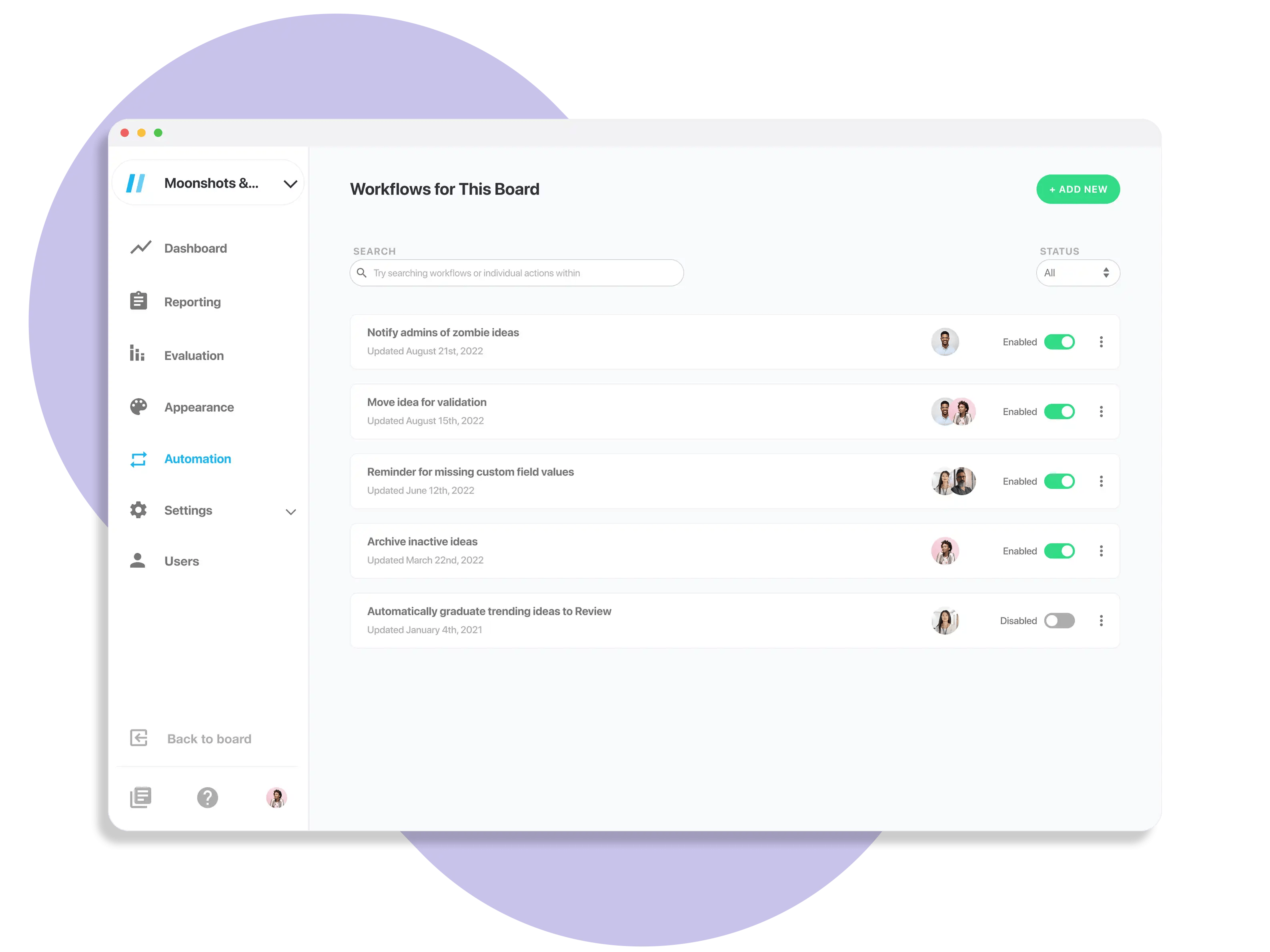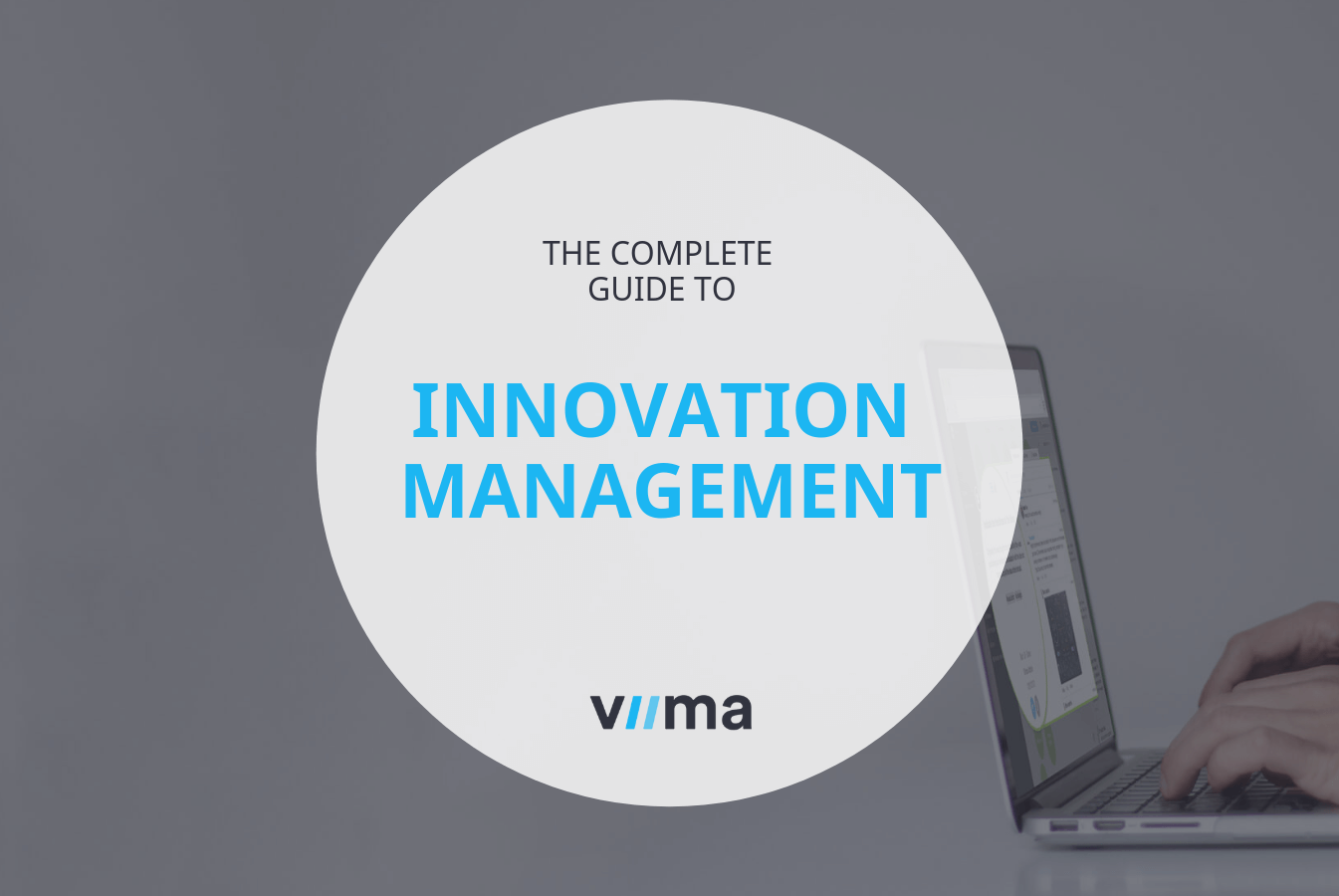How to Leverage Automation to Accelerate Innovation
The COVID-19 pandemic forced and accelerated digital transformation and the adoption of automation as businesses sought ways to operate remotely, ensure continuity, and adapt to new challenges. Rapid advancements in technology, especially in AI, robotics, and data analytics, have made automation more accessible and powerful, enabling its integration across various industries.
AI is put at the forefront of automation, but even though it plays a crucial role in automated systems, automation includes a broader spectrum of technologies and methodologies that go beyond AI.
Clearly, the new era of automation is shaping the future as we speak. How are other innovators leveraging automation, so they can be part of the future?
Executives invest 59% of IT budget on technologies related to intelligent automation and 90% of them say that intelligent automation creates higher value work for employees. Even more, 73% of industry leaders use workflow automation which reduces costs associated with manual tasks, while 31% of businesses say they have fully automated at least one function in their organization.
How can innovation managers and innovators in general, make the most out of automation? In this article we’ll show you some practical ways of leveraging different types of automation to accelerate innovation.
Table of contents

Brief introduction to automation possibilities
Automation can cover a broad definition, but before we dive deeper into the types of automation and the needs it meets, let’s agree on the definition of automation.
Automation refers to the use of technology, systems, or machinery to perform tasks, processes or operations with minimal human interventions.
In short, automation refers to the use of technology, systems, or machinery to perform tasks, processes or operations with minimal human interventions. The purpose is to streamline workflows, improve efficiency, accuracy and consistency while reducing manual effort and potential errors. All these benefits are closely linked to the role of automation in making innovation happen. But more on that later.
Automation is all around us and it’s making our lives easier. From the most basic types of automation, like the morning alarm clock that reminds us to go to work, to the life-changing dishwasher that saves us time and probably saved many relationships too.
So, automation hasn’t been used just for business profit and productivity. It had and continues to have an immense contribution to the progress of our increasingly complex society, improving our livelihood.
Organizations use automation in a number of major areas like infrastructure development, customer engagement, sales, marketing, process and industrial automation and so on.
Not to overcomplicate things by going into each and every area, here’s an overview of the four major types of automation and their use.
Even though many organizations might be using most of these automations, there’s always room for improvement. And if you’re not there yet, the key is to prioritize and know where to start. Over time you can move forward to developing processes, scripts or workflows that can be deployed at scale.
Basic automation
As businesses scale, and their operations grow, so does the number of time-consuming tasks. Repetitive tasks are draining. They tend to make very little use of your intellectual abilities and in the long run they’re not just detrimental to a company’s efficiency, but they also make employees feel unfulfilled and stuck in a rut.
Our everyday work is filled with such basic automations: chatbots for customer support, expense reporting tools for expense submissions, automized data entry and data migration, the use of task management software with automation features to assign tasks, set reminders, etc.
Basic automation is running all those simple tasks by executing rule-based systems or processes without the use of very advanced technologies or AI. Of course, automations like RPA (or Robotic Process Automation) can incorporate advanced AI or machine learning to enhance its capabilities and address more complex tasks.
For example, a simple chatbot that can have pre-defined answers, becomes even more powerful when integrated with AI. An AI-driven RPA bot learns from interactions to improve responses over time, making it more intelligent and adaptive.
Process automation
Process automation involves the use of technology to streamline, manage, and execute a sequence of tasks or a series of interconnected processes without constant human intervention.
Unlike basic automation, process automation focuses on orchestrating complex sequences of tasks or entire business processes. It often involves integration across multiple systems or departments, coordination of various tasks, and management of the entire workflow, whereas basic automation tends to focus on individual, simple tasks or actions.
Unlike basic automation, process automation focuses on orchestrating complex sequences of tasks or entire business processes.
Process automation leverages technology and tools to:
- Define the sequence of tasks or steps within a process.
- Set rules, conditions, or triggers that determine the actions to be performed.
- Automate the execution of these tasks based on predefined rules or triggers.
- Monitor, track, and manage the progress of automated processes.
- Generate reports, notifications, or alerts based on predefined criteria or milestones.
Workflow automation or business process management are types of process automation. Workflow automation focuses on automating the flow of tasks or activities within a specific business process.
For example, Viima is a powerful idea management tool for agile innovation teams. For a more robust ideation process you can use the workflow automation to enforce processes, and automate recurring or repetitive tasks based on your unique needs.
You'll find this very useful if you want for example to:
- Notify admins of "zombie" ideas that are not progressing
- Automatically graduate ideas to a new status, e.g. when they’re "hot"
- Automatically assign ideas to appropriate people
- Send automated instructions and/or thank you messages for idea submitters
- Set responsibility and move ideas to another board once approved for implementation
Business automation
Business automation, while it includes process automation, spans a wider spectrum within an organization. It integrates and automates various business functions, departments, and workflows across the entire enterprise. This can be automating processes in finance, HR, marketing, customer service, supply chain, and more, aiming to optimize the entire business operation.
ERP (Enterprise Resource Planning) is a good example of how business automation is applied to help companies increase efficiency of all their processes from different departments. ERP works like a digital control center that collects, stores and centralizes data across the whole organization. It brings together information from finance, HR, supply chain, sales, etc.
For example, when you place an online order to, let’s say IKEA, the ERP system updates inventory levels, triggers the shipping process, and records the financial transaction—all automatically. You are soon notified when it will be delivered or when you can pick it up. It streamlines workflows by providing a common platform for employees to access and share information, collaborate on projects, and follow standardized processes.
Intelligent automation
The fourth type of automation on this list is intelligent automation,. It’s similar to other automation categories in the sense that it leverages advanced technologies to enhance efficiency and decision-making capabilities. It brings together elements of business, process, and more basic types of automation by integrating AI and machine learning.
The big differentiator is that intelligent automation doesn’t just follow predetermined rules. Thanks to machine learning models and AI, it learns, predicts, and makes decisions based on evolving data and scenarios. By combining RPA (Robotic Process Automation) and AI, automation becomes more adaptable and efficient, enabling you to address more challenging tasks with more flexibility and accuracy.
The HR department of an organization has to onboard employees and handle various documents like resumes, identification proofs, tax forms, employment contracts, and certifications. A basic rule-based automation system might assist by sorting and filing documents based on predefined categories or keywords. However, it may struggle with unstructured data, inconsistent formats, or complex documents that require nuanced understanding.

With intelligent automation the system learns from historical data understands document structures, and extracts relevant information like employee details, qualifications, and compliance-related information.
This "upgrade" to intelligent automation is optimizing workflows, takes over some of the HR team's manual work, allowing them to focus more on strategic tasks like talent acquisition, training, and employee engagement.
All this is great for both employers and employees, but how does efficiency correlates with innovation? We explain this in the next section so keep on reading.
Can automation enable innovation?
Artificial Intelligence has long been seen as the catalyst for innovation, and the term has even been used interchangeably to refer to innovation. But that’s not the full picture.
Innovation management is top priority for executives and AI’s role in enhancing efficiency, creativity and driving data-informed decision making is now more pervasive than ever.
So, how is automation an enabler for innovation? Let’s look at some examples.
Increases the pace of innovation
The pace of innovation is the ultimate advantage, but there are so many things that can become bottlenecks and slow down your innovation journey. The larger the organization, the more fragmented and siloed departments and business units tend to be. Innovation managers are struggling to bridge gaps, share knowledge transparently and find solutions fast. It’s not that people don’t want or are incapable to innovate, but these environments have become highly complex and difficult to manage.
Automation allows devices, people and systems to stay linked and share information efficiently.
Automation allows devices, people and systems to stay linked and share information efficiently. We've seen this in the case of BIC (yes, you’re probably using their pens or razors).
 As they needed new, innovative products to be compliant with new regulations, they realized that the fastest and most cost-efficient way would be to team up with an external partner. Managing and tracking past interactions with external stakeholders was challenging; there were no established processes, communication plans, or unified tools for evaluating, promoting, and sustaining relationships within the partner ecosystem.
As they needed new, innovative products to be compliant with new regulations, they realized that the fastest and most cost-efficient way would be to team up with an external partner. Managing and tracking past interactions with external stakeholders was challenging; there were no established processes, communication plans, or unified tools for evaluating, promoting, and sustaining relationships within the partner ecosystem.
They made use of the AI powered solution, HYPE Partnering, to find relevant information about potential partners and identify the right fit. This type of automation within the HYPE platform helped them bring uniformity and centralize evaluation of partners, reducing the time spent on this activity by 30%.
Ensures consistent processes
Another challenge global organizations face is to maintain consistency in their processes. This can affect not only innovation managers but also others in the organization who contribute to the innovation work. Even something that could seem trivial like how people fill in their feedback or ideas can have a huge impact on the bottom line. There is a load of inconsistencies that could lead to hundreds of extra hours of work for innovation managers.
Automizing the ideation process as much as possible can lead to similar quality outcomes and experiences each time. For example, when teams use Viima in the ideation or idea generation campaigns they standardize their process.
 They also use the workflow automation feature to enforce processes and automate recurring or repetitive tasks, categorize ideas, send automatic reminders and so on.
They also use the workflow automation feature to enforce processes and automate recurring or repetitive tasks, categorize ideas, send automatic reminders and so on.
Minimizes human error
The lack of consistency in processes can be one cause of the errors, as people follow different methods for the same tasks, but there are plenty of other scenarios where human error can have a big effect on innovation.
Human error creeps in all areas and departments. Because of miscommunication or just the overwhelming number of things one must remember, deadlines and tasks can be easily missed. As mentioned above, when it comes to an ideation or innovation process, idea and innovation management tools like Viima can send automated reminders, set deadlines, and streamline workflows to ensure tasks are completed on time.
Automation helps mitigate human errors by introducing standardized, consistent, and reliable processes across various functions within an organization, as well as reducing the reliance on manual intervention prone to mistakes.
Helps reallocate resources to higher value work
Time is always the most important resource for innovators, and they need to use it wisely. There’s only a set number of hours in a day, and automation helps you make the most out of them.
At the same time, working on tedious, repetitive tasks rarely leads to career development and most people don’t like to feel stuck in their work. To make the best use of people’s skills and cater to their career development ambitions too, leaders should look at the tasks that can be automated.
This will allow people to focus on other activities that enhance their problem-solving abilities and creativity. If employees become more inclined to think creatively, experiment with new ideas, and seek innovative solutions to challenges, you ultimately optimize operational efficiency but also transform the organizational culture.
Marketing work has come a long way from the times before advanced automation was widely accessible.
For example, before automation, a marketing team would spend a great amount of time manually segmenting email lists and sending campaigns using basic email platforms. Segmentation was limited and required manual intervention. With tools like Mailchimp or HubSpot email campaigns have advanced segmentation based on user behavior, demographics, or engagement levels. For instance, triggered emails are sent automatically based on user actions (e.g., abandoned carts, welcome emails).
This shift allows marketers to allocate the extra time gained from automation to various strategic activities that enhance their marketing initiatives and contribute to overall business growth. They optimize campaigns, prioritize nurturing customers and building stronger relationships, and overall have a more holistic approach to marketing.
 The list can go on as automation and the latest developments in AI and Large Language Models (LLM) open new windows of opportunities to innovation.
The list can go on as automation and the latest developments in AI and Large Language Models (LLM) open new windows of opportunities to innovation.
Obviously, the myriad of ways in which you can use automation and the specific of each organization in how they manage innovation, means that there is all sort of risks associated with it, as well as complexities that make automation quite challenging. We’ll next have a look at some of these challenges and how they can be addressed or mitigated.
Automation challenges and how to overcome them
Acknowledging specific challenges within automation and coming up with practical solutions, can help you effectively address these hurdles and ensure a smoother adoption of automation to reap all the benefits already mentioned
Resistance to change
Resistance to change or adopting new technologies often occurs due to concerns like the fear of losing jobs, not understanding the new tech, or simply the status quo bias, when people want to keep things as they are, because “they work”.
To tackle this resistance, it's crucial to know where it's coming from—what's making people resist the change. If job security is a worry, show how learning new skills can open up opportunities and offer support for that transition. Just forcing change without highlighting its benefits and how things will change, won't do the trick.
The key is to create a compelling story and describe the positive outcome without making false promises. Honesty and transparency are vital.
People get uneasy if they feel their role is being downgraded or their work is being taken away. It's about perspective and maintaining responsibility. Even with automation, the teams or individuals handling the work before should still be in charge, ensuring the goals are achieved. The key is to create a compelling story and describe the positive outcome without making false promises. Honesty and transparency are vital.
Simply put, driving adoption at an organizational level requires the right culture. You'll find more about building an innovative culture in this guide.
Lack of Expertise
Another common challenge is the lack of expertise and understanding of what areas should be automated. Large organizations tend to work too much in siloes, and this leads to a lack of visibility into what slows down or creates bottlenecks for other departments. You should bring together expert subject matters from various domains to get a better understanding of the larger picture and identify what processes or tasks should be automated.
It's difficult to implement solutions that impact the entire organization. To make things easier, start small by targeting a few tasks that are easy to automate (4-5) rather than attempting to automate everything at once. Something like workflow automation serves as a good starting point, aiding in streamlining business processes swiftly and adapting to the distinct needs of each unit.
Once you get the hang of it, you see what works and what doesn’t by monitoring the changes you have implemented then you can think of scaling automation.
Scaling from tasks to processes
Automating entire processes is what you should be after, but the bigger the company the more challenging it gets. You need to consider all the interdependencies, stakeholders and systems that will be impacted. Focusing solely on task-level automation can result in inefficiencies and missed opportunities. For successful process automation you need strategic planning, investment, and commitment from top management.
For successful process automation you need strategic planning, investment, and commitment from top management.
In order not to get stuck to simply automating mundane tasks, implement pilot projects or proof of concepts to test the automation solution on a smaller scale within the process. Adopt an iterative approach by continuously monitoring the automated process, gathering feedback, and refining or expanding automation based on learnings and feedback. Evaluate its effectiveness, identify any issues, and refine the automation approach before scaling.
 Make sure to include key performance indicators (KPIs) to measure the impact of process automation. For all this to take place you need, and end-to-end process and you can’t have that without a robust automation strategy. It all starts with a systematic process of collecting, evaluating and prioritizing ideas around automation. For example, many of our customers use Viima’s boards to find or prioritize automation ideas.
Make sure to include key performance indicators (KPIs) to measure the impact of process automation. For all this to take place you need, and end-to-end process and you can’t have that without a robust automation strategy. It all starts with a systematic process of collecting, evaluating and prioritizing ideas around automation. For example, many of our customers use Viima’s boards to find or prioritize automation ideas.
How to automate for innovation?
Having clarified some of the most important aspect of automation and how it can fuel innovation, let’s next have a look at how you can start or progress your automation journey. Keep in mind that for automation to be impactful, you need to put data at the center of everything you do and to think of the best ways in which you can enable people to leverage that data to their and the organization’s advantage.
We’ll go through a few practical steps and examples on how to go about those but remember that there is no single way to approach automation at scale. Every organization is different.
Define Your Automation Vision
Some of you might have entire teams dedicated to automation who work together to build the infrastructure for automation. But not all organizations can afford to dedicate an entire department to automation. This means that you first need to get buy-in from others, show how you can drive efficiency. For that you have to start with the “why” of automation. Simply put, what are the needs that automation will serve.
Determine what automation means for your specific context. Choosing a clear starting point among various automation possibilities is crucial. Crafting a compelling narrative or vision story that illustrates the benefits and outcomes of automation can be a starting point to get people excited about the changes and benefits automation will bring about.
Identify Automation Opportunities
Identifying where automation can make the most impact requires strategic planning. Focus on areas where resources are limited to maximize the efficiency of time and effort.
Tap into your organization's knowledge and data resources to pinpoint where automation can enhance operational effectiveness. Translate these insights into actionable strategies that your employees can readily implement. Start with quick, manageable automation wins to streamline processes, leveraging tools like Viima to prioritize automation initiatives effectively.
Develop an Automation Strategy and Roadmap:
The next step is to craft a comprehensive strategy and roadmap for automation. Just like you have a marketing and innovation strategy, you need one for your automation journey.
To craft this strategy you should:
- assess the current state of processes and tools you are using
- establish principles to guide automation efforts
- refine metrics that will allow you to measure success
- outline a clear roadmap
A roadmap will help you see the big picture and bring clarity on the vision, strategy and goals. Visualise the steps that you'll take in your automation journey and communicate the roadmap to everyone in the organization.
Accelerate and Scale Automation:
A final, ongoing step is to ramp up and expand automation efforts organization-wide. Develop a diverse portfolio of automation projects that can be executed simultaneously across various departments.
Empower and educate teams on how to manage and expand automation initiatives, leading to substantial efficiency gains. This concerted effort enables the seamless integration of automation across the organization.
Conclusion
Innovation stands at the intersection of structure, creativity, and implementation. While creativity gives birth to new ideas, turning them into reality requires, among other things, time, and mental space—resources often constrained by mundane, repetitive tasks. Automation will not fix all your problems, but it’s a great enabler for efficiency and innovation.
To leverage automation capabilities and use it to accelerate innovation you need a clear plan, well defined goals and objectives, as well as the right mindset and culture throughout the whole organization.
Starting small is key—begin with something like automating workflows and establishing business rules. This incremental approach allows for the gradual integration of automation, providing tangible benefits and setting the stage for broader implementation.
Through a deliberate strategy and an innovation culture, automation becomes a force, enabling both efficiency and new ideas to flourish.








